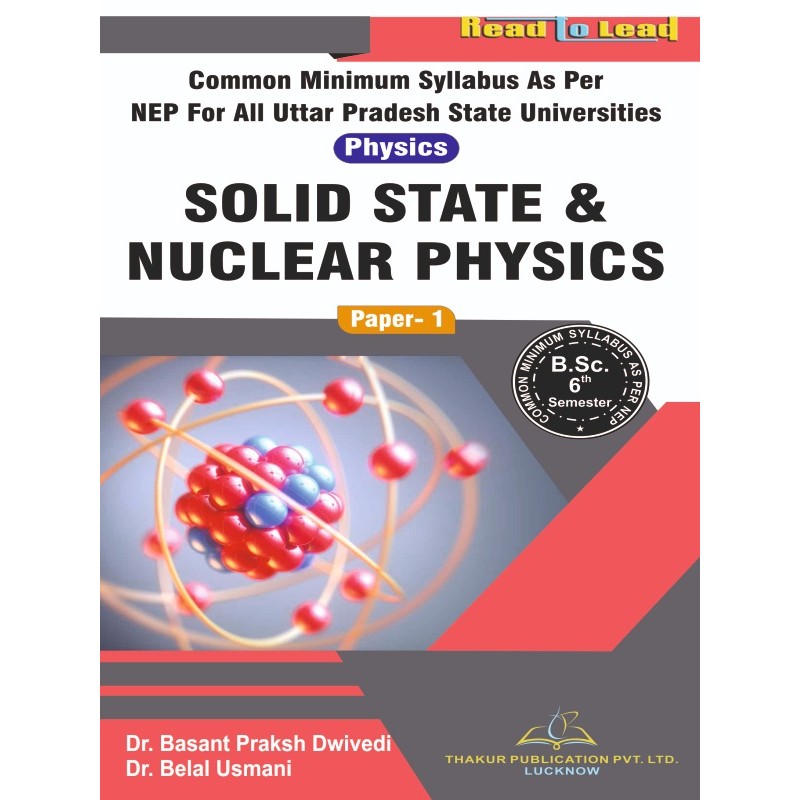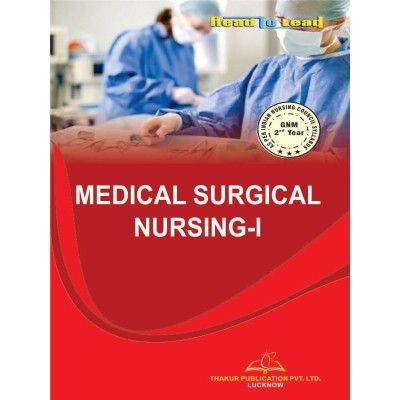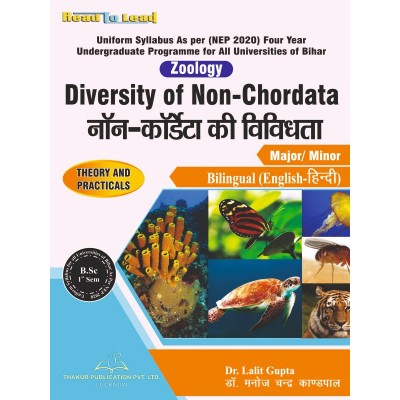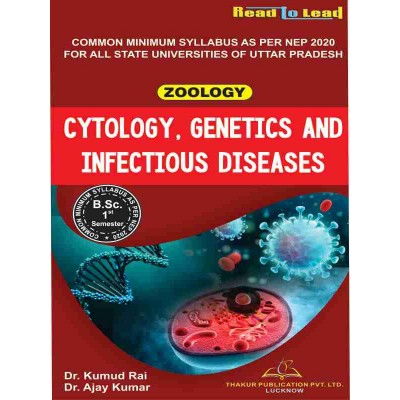Categories
- Pharmacy
-
Nursing
-
MBA
-
BBA
- U.P. State University
- Veer Bahadur Singh Purvanchal University, Jaunpur
- Chaudhary Charan Singh University, Meerut
- Dr. Bhimrao Ambedkar University, Agra
- Chhatrapati Shahu Ji Maharaj University, Kanpur
- Mahatma Jyotiba Phule Rohilkhand University, Bareilly
- Mahatma Gandhi Kashi Vidyapith, Varanasi
- Dr. Ram Manohar Lohia Avadh University, Ayodhya
- Deen Dayal Upadhyaya Gorakhpur University
- Prof. Rajendra Singh (Rajju Bhaiya) University, Prayagraj
-
BCA
- UP State Universities
- University of Pune
- I.K.Gujral Punjab Technical University (PTU)
- University of Rajasthan
- Rashtrasant Tukadoji Maharaj Nagpur University
- Uttar Pradesh NEP2020
- University of Rajasthan ,Jaipur (According to NEP-2020)
- BCCA (B. Com - Computer Science)
- Haryana
- West Bengal
- BBA (CA)
- PUNE BCA (Sci,Commerce)/B.Com (CA)
- Dr. A. P. J. Abdul Kalam Technical University, Lucknow ( AKTU )
- MCA
-
B Ed
- Lucknow University B.Ed Books
- Chaudhary Charan Singh University/Maa Shakambhari University, Saharanpur
- Dr Bhim Rao Ambedkar University, Agra
- Mahatma Gandhi Kashi Vidyapeeth, Varanasi
- Chhatrapati Shahu Ji Maharaj University
- Prof. Rajendra Singh (Rajju Bhaiya) University, Prayagraj (PRSU)
- Mahatma Jyotiba Phule Rohilkhand University(Mjpru), Bareilly
- Dr. Ram Manohar Lohia Avadh University, Ayodhya
- Bundelkhand University, Jhansi
- B.A,B.ed
- B.Sc, B.ed
- Deen Dayal Upadhyaya Gorakhpur University
- Veer Bahadur Purvanchal University (VBPU)
- Maharaja Suhel Dev State University ,Azamgarh (MSDSU)
- Raja Mahendra Pratap Singh State University, Aligarh (RMPSSU)
- Barkatullah Vishwavidyalaya (Bhopal)
- Jiwaji University (Gwalior)
- Vikram University (Ujjain)
- Dr. Harisingh Gour University (Sagar)
- Devi Ahilya Vishwavidyalaya (Indore)
- Rani Durgavati Vishwavidyalaya (Jabalpur)
- Awadhesh Pratap Singh University (Rewa)
- Maharaja Chhatrasal Bundelkhand University (Chhatarpur)
- D. EL. ED
- TET
-
B Com
-
B Sc
- B.Sc. U.P. State Universities Common Syllabus NEP
- Veer Bahadur Singh Purvanchal University, Jaunpur
- University of Lucknow
- Chaudhary Charan Singh University, Meerut
- Madhya Pradesh
- Chhatrapati Shahu Ji Maharaj University, Kanpur
- Dr. Bhimrao Ambedkar University, Agra
- Mahatma Gandhi Kashi Vidyapith, Varanasi
- DEEN DAYAL UPADHYAYA GORAKHPUR UNIVERSITY
- Prof. Rajendra Singh (Rajju Bhaiya) University, Prayagraj
- Dr. Ram Manohar Lohia Avadh University, Ayodhya
- Mahatma Jyotiba Phule Rohilkhand University, Bareilly
- Uttarakhand State Universities
- B.Sc. Bihar Universities Common Syllabus NEP
- University of Rajasthan (Jaipur)
- Haryana
-
Bachelor of Arts [B.A.]
- B.A. Of U.P. State Universities Common Syllabus NEP
- Veer Bahadur Singh Purvanchal University, Jaunpur
- University of Lucknow
- Chaudhary Charan Singh University, Meerut
- Chhatrapati Shahu Ji Maharaj University, Kanpur
- Dr. Bhimrao Ambedkar University, Agra
- Mahatma Gandhi Kashi Vidyapith, Varanasi
- Deen Dayal Upadhyaya Gorakhpur University
- Prof. Rajendra Singh (Rajju Bhaiya) University, Prayagraj
- Dr. Ram Manohar Lohia Avadh University, Ayodhya
- Mahatma Jyotiba Phule Rohilkhand University, Bareilly
- Madhya Pradesh
- Uttarakhand
- Bihar
- University of Rajasthan (Jaipur Syllabus as Per NEP2020)
- Haryana NEP-2020
- B Tech
- LLB
- SWA Education
(PHYSICS ) (Paper-1) SOLID STATE & NUCLEAR PHYSICS B.Sc 6th Sem U.P

Click below to Buy E-Book Edition:
Buy Latest (PHYSICS ) (Paper-1) SOLID STATE & NUCLEAR PHYSICS Book in English Language for B.Sc 6th Semester for all U.P. State Universities Common Minimum Syllabus as per NEP. Published By Thakur Publication. Written by Experienced Authors | Fast & All India Delivery |
AUTHORS : Dr. Basant Prakash Dwivedi , Dr. Belal Usmani
ISBN : 978-93-5755-688-0
₹300.00
Tax excluded
Click below to Buy E-Book Edition:
Buy Latest (PHYSICS ) (Paper-1) SOLID STATE & NUCLEAR PHYSICS Book in English Language for B.Sc 6th Semester for all U.P. State Universities Common Minimum Syllabus as per NEP. Published By Thakur Publication. Written by Experienced Authors | Fast & All India Delivery |
AUTHORS : Dr. Basant Prakash Dwivedi , Dr. Belal Usmani
ISBN : 978-93-5755-688-0
Syllabus
Physics
Solid State & Nuclear Physics
Course Code: B010601T
|
Unit |
Topics |
No. of Lectures |
|
|
Part A: Introduction to Solid State Physics |
|
|
I |
Crystal Structure Lattice, Basis & Crystal structure. Lattice translation vectors, Primitive & non-primitive cells. Symmetry operations, Point group & Space group. 2D & 3D Bravais lattice. Parameters of cubic lattices. Lattice planes and Miller indices. Simple crystal structures - HCP & FCC, Diamond, Cubic Zinc Sulphide, Sodium Chloride, Cesium Chloride and Glasses. |
07 |
|
II |
Crystal Diffraction X-ray diffraction and Bragg’s law. Experimental diffraction methods - Laue, Rotating crystal and Powder methods. Derivation of scattered wave amplitude. Reciprocal lattice, Reciprocal lattice vectors and relation between Direct & Reciprocal lattice. Diffraction conditions, Ewald’s method and Brillouin zones. Reciprocal lattice to SC, BCC & FCC lattices. Atomic Form factor and Crystal Structure factor. |
07 |
|
III |
Crystal Bindings Classification of Crystals on the Basis of Bonding - Ionic, Covalent, Metallic, van der Waals (Molecular) and Hydrogen bonded. Crystals of inert gases, Attractive interaction (van der Waals- London) & Repulsive interaction, Equilibrium lattice constant, Cohesive energy and Compressibility & Bulk modulus. Ionic crystals, Cohesive energy, Madelung energy and evaluation of Madelung constant. |
07 |
|
IV |
Lattice Vibrations Lattice Vibrations: Lattice vibrations for linear mono & di atomic chains, Dispersion relations and Acoustical & Optical branches (qualitative treatment). Qualitative description of Phonons in solids. Lattice heat capacity, Dulong-Petit’s law and Einstein’s theory of lattice heat capacity.
Free Electron Theory: Fermi energy, Density of states, Heat capacity of conduction electrons, Paramagnetic susceptibility of conduction electrons and Hall effect in metals.
Band Theory: Origin of band theory, Qualitative idea of Bloch theorem, Kronig-Penney Model, Effectice mass of an electron & Concept of Holes & Classification of solids on the basis of band theory. |
09 |
|
|
Part B: Introduction to Nuclear Physics |
|
|
V |
Nuclear Forces & Radioactive Decays General Properties of Nucleus: Mass, binding energy, radii, density, angular momentum, magnetic dipole moment vector and electric quadrupole moment tensor.
Nuclear Forces: General characteristic of nuclear force and Deuteron ground state properties.
Radioactive Decays: Nuclear stability, basic ideas about beta minus decay, beta plus decay, alpha decay, gamma decay & electron capture, fundamental laws of radioactive disintegration and radioactive series. |
09 |
|
VI |
Nuclear Models & Nuclear Reactions Nuclear Models: Liquid drop model and Bethe-Weizsacker mass formula. Single particle shell model (the level scheme in the context of reproduction of magic numbers included).
Nuclear Reactions: Bethe’s notation, types of nuclear reaction, Conservation laws, Cross-section of nuclear reaction, Theory of nuclear fission (qualitative), Nuclear reactors and Nuclear fusion. |
09 |
|
VII |
Accelerators & Detectors Accelerators: Theory, working and applications of Van de Graaff accelerator, Cyclotron and Synchrotron.
Detectors: Theory, working and applications of GM counter, Semiconductor detector, Scintillation counter and Wilson cloud chamber. |
06 |
|
VIII |
Elementary Particles Fundamental interactions & their mediating quanta. Concept of antiparticles. Classification of elementary particles based on intrinsic-spin, mass, interaction & lifetime. Families of Leptons, Mesons, Baryons & Baryon Resonances. Conservation laws for mass-energy, linear momentum, angular momentum, electric charge, baryonic charge, leptonic charge, isospin & strangeness. Concept of Quark model. |
06 |
U.P NEP2020/B.SC (English) /6/01
50 Items
New
16 other products in the same category:
Comments (0)
No customer reviews for the moment.
Your review appreciation cannot be sent
Report comment
Are you sure that you want to report this comment?
Report sent
Your report has been submitted and will be considered by a moderator.
Your report cannot be sent
Write your review
Review sent
Your comment has been submitted and will be available once approved by a moderator.
Your review cannot be sent
























